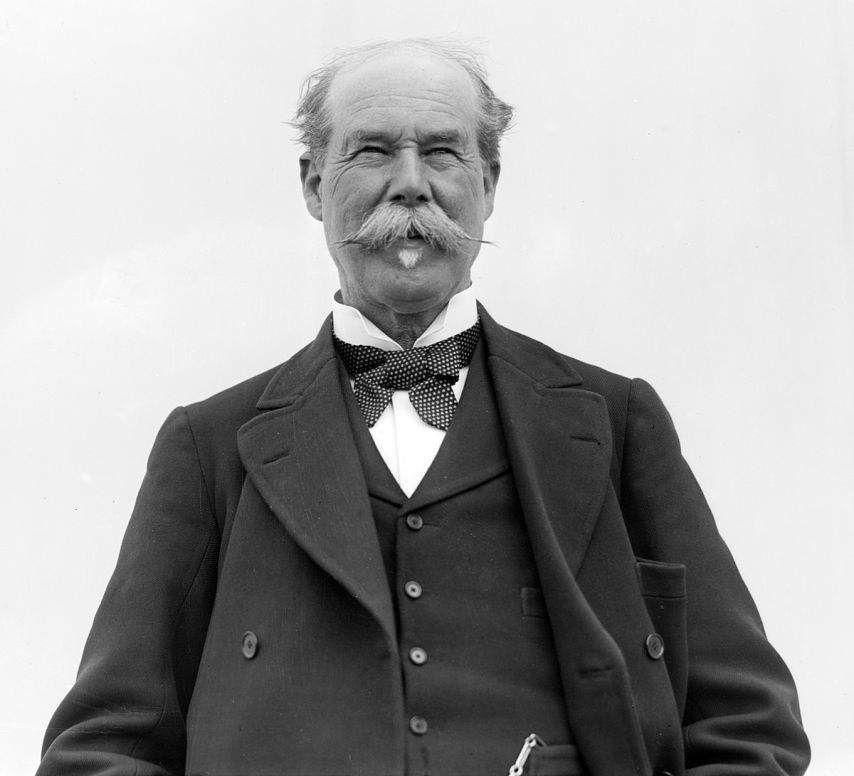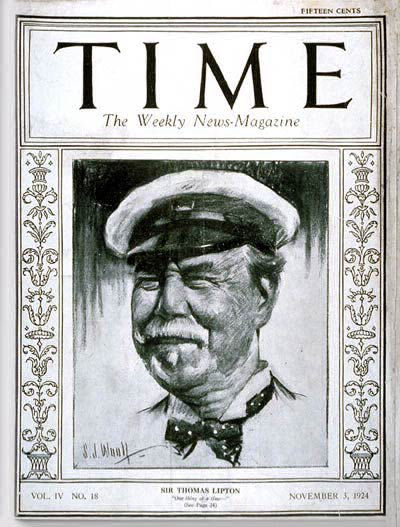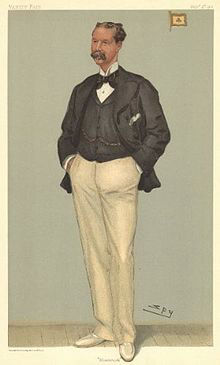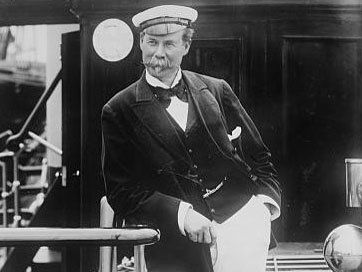

Undoubtedly, the one member of Lodge Scotia who has achieved most fame outwith Freemasonry is Tommy Lipton. He was born at 13 Crown Street in Glasgow on 10th. May 1850 of Irish immigrant parents, who had come over to Scotland as a result of the lack of opportunities in their homeland.
He sailed to America as a steerage passenger on the Anchor Line, staying there for five years, during which time he took up work where he could find it, firstly on a rice plantation, then as a tramcar driver, a fireman, and, finally, as a grocer's assistant in a New York department store.
His hard work had obviously been well rewarded, for he returned to Glasgow in 1870 with savings amounting to approximately £100, all of which he used wisely, because almost immediately he was Initiated into Lodge Scotia on 31st. May that year.
He was Passed on 17th. August 1870 and Raised later that same evening. On his twenty-first birthday, he opened his first shop at 101 Stobcross Street in Finnieston, where he slept in the back room while attempting to build up his business. Within ten years he had outlets all over Britain. To gain control over prices and quality, he bought over most of the companies who had originally supplied him with goods, including tea, coffee and cocoa plantations in Ceylon, baking houses, fruit farming interests and rubber estates in a variety of locations, packing houses for hogs in Chicago, and British bacon-curing factories.
The year 1898 held special significance for him, because he was Knighted by Queen Victoria for his contribution to the business world and for his many and varied charitable works. Appropriately, he actually received his Knighthood at the Queen's holiday residence on the Isle of Wight, only a few miles South-East of Cowes, the headquarters of the Royal Yacht Squadron, which was later to play a prominent part in his life.
While he was consolidating his business interests in London, and mainly because of his yachting interests, he became friendly with Edward the Seventh, then Prince of Wales, and his wife, Alexandra of Denmark. Co-incidentally, Edward had been a Patron of Scottish Freemasonry since 1870, the year of Brother Lipton's Initiation, and Alexandra is the lady in whose honour the local park and Alexandra Parade were named.
In 1899, he made the first of five challenges for the America's Cup in a yacht named "Shamrock". Subsequent attempts were made in 1901, 1903, 1920 and 1930, all of which failed, but his repeated efforts endeared him to the American public, who collected subscriptions and presented him with a Loving Cup engraved "To possibly the World's worst yacht builder, but absolutely the World's most cheerful loser".
When Queen Victoria died early in 1901, her eldest son, Albert Edward, succeeded her on the Throne as King Edward 7th., and he then honoured his friend Thomas Lipton by initially inducting him into the Royal Victorian Order as a Knight Commander of the Order ( K.C.V.O.) and then, only one year later, by conferring a Baronetcy on him. Continuing in this same vein, Lipton was appointed an Honorary Colonel of the 6th. Volunteer Battalion of the Highland Light Infantry, and a Lieutenant of the City of London, representing the King.
In 1909, he put up the football trophy competed for by tiny West Auckland of England and mighty Juventus of Italy. The scoreline of 2-0 in favour of West Auckland inspired another trophy, "The Lipton Crown of Italy World Cup" which cost £105, and was contested by teams from Germany, Italy, Switzerland and England, and is generally thought to have been the inspiration behind the formation of the World Cup as it now stands.
His varied interests did not go unnoticed, for he received the "Grand Order of the Crown of Italy and of the Order of St. Sava" from the King of Italy in April 1910, while his opulence was mentioned in the original words of the Music Hall song "Burlington Bertie", penned in 1914, and in at least another thirty songs written since then.
He was the principal speaker during the first authenticated wireless telephone call across the Atlantic in October 1922, a small town in Canada was named after him in 1924, and, in 1925, to commemorate his 75th. birthday, he handed over the keys of a large villa in Cambuslang for conversion to the "Lipton Memorial Nursing Home".
The City Fathers recognised the credit and renown he had brought to his native City, and they also paid tribute to the respect and admiration in which he was universally held. In 1923, he was made a Burgess of the City of Glasgow, receiving the Freedom of the City at a ceremony in St. Andrew's Halls, because of the "exemplary and patriotic services he had rendered during the Great War. He had plied his yacht 'Erin' between Marseilles in France and Salonika in Greece, carrying urgently required medical supplies, until sunk by a hostile submarine in a one-sided contest".




This site was started with Mobirise